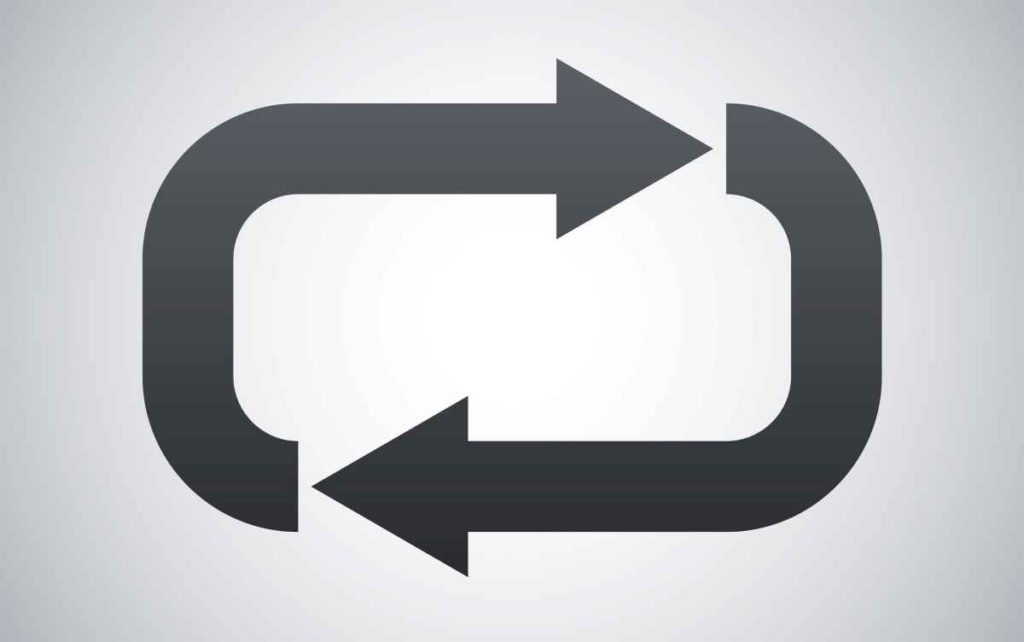There’s a major difference between studying hard versus studying smart. Studying hard doesn’t necessarily focus on efficiency or effectiveness with learning material, but studying smart does.
Smart studying also consists of implementing and utilizing study methods that can work for ANY course, not just one or two. While some study tips that many PT students tend to offer can be beneficial for certain, specific classes, having some study tips that can help you out with ANY single PT course should be at the top of your list (which is what this article is all about).
We can talk about making flashcards, using coloured highlighters and all that sort of stuff, but chances are that you’re already doing that, or that you’ve realized this type of approach doesn’t necessarily work well (or even at all) for every class. As I say all the time, every student and their respective needs is a bit different, but the following tips can be extremely beneficial and apply to every one of your classes:
The quick rundown of the study tips in this article:
- Study tip 1: Know your learning style (visual, auditory, etc.) based on the material you’re learning
- Study tip 2: Always ask yourself what’s working and what isn’t – continually refine and optimize your study systems and habits
- Study tip 3: Make a regimented study plan each semester and stick to it (be intentional with your studies)
- Study tip 4: Repetito est mater studiorum (Repetition is the mother of all learning)
- Study tip 5: Use technology to your advantage (article link)
- Study tip 6: Take advantage of your professor’s office hours and continually use them throughout the semester
The quick overview of this article:
- Looking at the big picture when it comes to studying
- The in-depth breakdown of the six study tips useful for any course
- Concluding remarks
Take a step back and get the big picture of studying
When it comes to studying, take a step back and look at the big picture: Studying is the act of taking new information and material that you’re presented with and finding ways to understand, store and apply information when needed. The process and ways in which one does this is not confined to any one particular method or approach.
Therefore, looking at the big picture can be extremely helpful; understanding how YOU break down, disseminate, learn and retain information is the backbone to more effective learning and studying. Just because one of your peers chooses to study in one particular way doesn’t necessarily mean that it’s the way that YOU should approach your studies, and it’s critical that you keep this in mind at all times.
As well, once you know your preferred learning styles and methods, you need to understand that it’s important to continually optimize and evolve your study process, which is another part of the big picture when it comes to studying. These are the first two key points in this article, and comprise the bigger picture of studying.
That being said, let’s start taking a look at the six study tips within this article that can be applied to ANY of your PT courses and that can produce drastic results.
Study tip 1: Know your own personal learning style(s) based on the type of material that you’re learning

The very first thing you need to do before anything else is to determine your preferred learning style or styles. Most students have a decent idea from their undergrad days, but not all students do, and preferred learning styles may be different based on the material you’re covering.
If you’re not sure what your preferred study style(s) might be, there are resources online that can help you determine it a bit better. Some students are auditory learners, others are visual, some kinaesthetic (like me), or a mix of all, depending on the material.
The bottom line: Knowing your learning style(s) is arguably the highest-yield tip that there is since your actual process of studying should be built on the foundation of study styles that are effective for YOU. If you don’t know your strongest learning style(s), you can spend hours upon hours every semester studying in a manner that is incredibly inefficient for your learning needs.Unfortunately, this is a mistake that too many PT students seem to make.
Study tip 2: Always ask yourself what’s working and what isn’t – continually refine and optimize your study systems and habits

Once you’re pretty confident on what your learning styles may be, it would be wise to continually audit and check-in on how these styles and subsequent study processes are treating you. This is because human beings tend to become better, more efficient and continually evolve with tasks and actions that they repeat on a regular basis. In other words, the more familiar you get with something, the more you figure it out and can make it work for you.
Here’s a great question to ask yourself whenever you’re studying: How’s this process working for me?
Ask yourself how you could make a particular study process just a bit more efficient, be it for time or for memory retention, etc. It’s different for every student, but even after years and years of studying, you can likely find ways to improve your study habits if you continually ask yourself what’s working for you and what isn’t.
It usually takes a decent amount of trial and errorto do this, but it’s well worth it since the end result leaves you with a study process that is highly refined, optimized and one that you will develop supreme confidence within.
Don’t be afraid to try new methods of studying. Studying different material can require different methods, or even a mix of methods. What worked for you during undergrad might not work as well for PT school. Or maybe it works even better. The point is, you’ll only know if you take a step back and ask yourself these types of questions on a regular basis throughout each and every semester.
The bottom line: Smart people tend to always ask themselves how something can be improved and how it can made more efficient or more effective, even if it’s just to a minimal extent. What doesn’t make sense is to continually strive for improvement in your academics but never taking inventory of what seems to work well for you and what doesn’t. If you don’t continually assess, the best you can do is guess.
Study tip 3: Make a regimented study plan each semester and stick to it (be intentional with your studies)

This tip is one of those tips that is well-known but simply doesn’t get the respect it truly deserves. Implementing a regimented, semester-long study plan is a powerhouse move to make that is an absolute game changer if you’re serious about it.
If you’re casual about your studying, you’ll likely end up being a casualty in PT school. In other words: You need to be intentional with your studying.This is due to the fact that you will get stretched pretty thin for available study time each and every semester within PT school. As a result, falling behind on assignments and studies can occur at an alarming rate if you’re not careful with setting aside time for studies.
If you’re someone who has a busy enough schedule as it is, or know that you’ll face constant distractions throughout each semester, come up with a regimented study plan and pencil in your study time to a calendar for each and every week. Be intentional and carve out the time you know you’ll need.
Just trying to fit your study time in whenever you have some downtime can work for some students, but many students would benefit from having a regimented study plan, especially when wanting to ensure maximal academic success. When you regiment your study hours, it’s easy to turn down distractions or offers from others that you’d otherwise say “yes” to. This is, of course, provided that you’re serious about your studies.
As an example: If you normally have your Monday study time booked in from 4pm – 6:30pm, you know that time is your time. It’s booked into your schedule. You can tell people “sorry, I’m busy during those hours” if they invite you out at 5pm. You don’t even have to tell them that you’ll busy studying if you don’t want to.
Or, let’s say that you know you want to do evening activities with others on Mondays. If this is the case, you might book your study hours for early in the morning. You therefore become intentional about getting your study time taken care of and out of the way in the morning so that the evening is more free for you with other pursuits. It’s not rocket science, it’s just appropriate planning and dedication.
The worst thing to do would be to think that you’ll get around to studying in the evening, but then get distracted by an invite to do something else that doesn’t involve studying. This would be a prime example of not being intentional with your studies. Don’t go into this territory.
The bottom line: Making a regimented study calendar is an essential step to take if you want to make sure you get in your needed study time every week. Sometimes you just can’t afford to “wing it” when it comes to your study time. Being intentional with carving out time helps to ensure that you won’t fall behind on assignments and that you’re giving yourself the required time you know you’ll need to learn and master the content for your coursework.
Study tip 4: Repetito est mater studiorum (Repetition is the mother of all learning)

This Latin phrase really encompasses what PT school is all about, regardless of the course.
If you want to get good at something, the best way usually involves repping it out over and over and over again. It’s boring and even soul-sucking at times, but it works. The good news is that how you choose to rep out material that you’re trying to learn and/or master can be done in more than one way.
Sometimes repetition simply refers to recording some audio content on a voice recorder and just listening to it over and over for hours on end. Sometimes it’s just straight-up rote repetition of writing material down onto paper or a white board. Other times it may be verbally reciting it out loud from memory. There’s more than one way, you just gotta know which way(s) will be best for you.
This is essentially the concept of “it doesn’t have to be pretty, it just has to work.”
Don’t discount the power of repetition. You learned your ABC’s by repetition. You learned how to tie your shoes by repetition. The key is to give yourself plenty of time for repetition to take it’s effect. Don’t try to cram by repetition the night before an exam and then blame your lousy grade on repetition letting you down. Give yourself plenty of time to casually but consistently rep out the material that you need to drill into your head.
Of course, there’s more to learning than just repetition. A vast majority of curricula in PT school will require the application and critical thinking for what you’ve learned or memorized. But, having the base knowledge drilled into your head is the starting point. Gross anatomy is the perfect example of a course that is all about repetition. If you want to know why, be sure to check out my article, What are the Hardest Courses for Students in PT School?
The bottom line: High levels of repetition is not a sexy “study hack” of any sort. But what it IS is a guaranteed way to become competent and even master whatever material it is that you’re trying to memorize or improve upon. It’s boring, but it’s simple and it works. I’m sometimes surprised at just how undervalued this concept is with students.
Study tip 5: Use technology to your advantage

Whichever course you’re trying to study for, there’s amazing content online that can help you learn and master it even better. What’s even better is that a ton of it is free, from trustworthy sources and of pretty high-end quality.
This should come as no surprise to you, as you’ve likely grown up with this technology at your fingertips. But every year there are new resources that emerge all over the internet that are dedicated to helping students and individuals learn such material, so it’s worth continually going online and finding new and valuable resources that you can add to your arsenal of study arsenal.
New and great YouTube channels and videos are popping up all the time, free online textbooks and courses also appear online every year, and so on. So, don’t discount the internet having effective AND reliable resources for you to learn from, provided they’re from trustworthy sources.
One such great example is the free online neuroscience textbook by the University of Texas, that I wrote about in my article The Best Free Resource for Neuroanatomy Courses in PT School. Nothing like having a free, online neuroscience textbook with every chapter being written by a PhD author who is an expert in each chapter’s respective field.
For a list of other great resources, be sure to check out my article Six Helpful Apps to Help PT Students Achieve More in PT School and Six Helpful, Free Websites PT Students Can Use for Better Grades.
The bottom line: For each and every course you take in PT school there will be online resources that can help you out. Many of them will be free and trustworthy. If you’re willing to do a little digging, you can find what you’re looking for. Physical textbooks are great, but not when you’re a broke student and have to pay hundreds of dollars for them. The basic material that you are required to learn in PT school can be found online and can make life way easier if you use them to your advantage.
Study tip 6: Take advantage of your professor’s office hours and continually use them throughout the semester

I can’t begin to tell you how surprised I was each and every semester when I learned that students who had been struggling in a particular course hadn’t ever gone to the course professor during available office hours for help.
I even remember one girl in our class (who wound up decelerating into the cohort beneath us due to her academic performance issues) who was talking about being on the verge of decelerating and not knowing what to do. When I asked her if she had talked to any of the professors during their office hours, she informed me that she didn’t even know where their offices were! Yikes!
If you’re struggling in a course, your professor’s office should be the first place you turn to. This can allow you to get clarification of concepts, ask for further resources and much more. Even if you’re not struggling, heading in to chat with your professors during their office hours can give you a great upper hand. You can quickly pop your head into their office and making sure you’re comfortable with the upcoming material that will be presented a few weeks down the road is a wise move. Office hours aren’t only meant to be used when you’re struggling.
One of the best things you can do at the start of every semester for every course (regardless of whether or not you’re struggling within the program) is to ask the professor which topics in the course they feel students tend to struggle with the most.
Aside from your professor giving you their personal insight as to where to watch out for potential issues within the course, they oftentimes have great additional insight or resources they can share with you. Professors really enjoy working with students who show that they are hungry and are willing to work hard. Just having a bit of a heads up on the more challenging material or personal insight from your course professor can make a world of difference for doing better in the course.
Of course, this tip doesn’t work at all unless YOU do. Meaning you had better put in the time for studying and working hard in addition to stepping foot into your professor’s office during their available office hours.
The bottom line: Your professors will have weekly office hours in which they’re available to meet with you. These office hours are a free gift to students who are struggling with material or students who want to make sure that they stay on top of their coursework within the professor’s course. They are a critical first-step for either rectifying any issues you may be having or for ensuring that you’re on a good path. Don’t let these hours go unused.
Concluding remarks
While there are dozens upon dozens of great ways to study for your courses, it’s a wise idea to have a handful of study tips that can work for ANY of your PT courses, regardless of the material. The tips within this article certainly aren’t the only universal tips that can be used effectively for any of your courses, but they are a great starting point.
Being smart with your studying begins with ensuring that you know your individual learning style(s) that work best for you, and knowing that your learning styles may be different depending on the type of material that you’re trying to learn and master. You MUST know your most ideal learning styles if you want to avoid spinning your wheels and getting nowhere when it comes to studying.
From there, remember that you should make a continual effort to refine and enhance your study methods. Getting your study game to the point of it being highly efficient and effective is what you should be striving for. It’s a process that can take time and effort, but one that’s well worth it.
From there, make a regimented study plan so that you won’t fall behind or get sidetracked. Then, don’t be afraid to rep it out when it comes to pounding the material into your head. You won’t always need to pound things into your head with endless repetition, but don’t be afraid to do so when need be. Use technology to help you out along the way and take advantage of your professors office hours to enhance your chances of success.
Use these study tips as a foundation to then build the rest of your study methods and study tips upon. You’ll be doing a ton of studying when in PT school, so it only makes sense to be an expert at knowing how to study based on your own needs. If you master this, you’ll have a much more enjoyable and successful time in PT school.
Grind hard. You got this.

Hi! I’m Jim Wittstrom, PT, DPT, CSCS, Pn1.
I am a physical therapist who is passionate about all things pertaining to strength & conditioning, human movement, injury prevention and rehabilitation. I created StrengthResurgence.com in order to help others become stronger and healthier. I also love helping aspiring students and therapists fulfill their dreams of becoming successful in school and within their clinical PT practice. Thanks for checking out my site!

